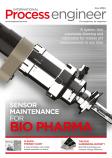When a combustible material, an ignition source and atmospheric oxygen collide in a confined space, the result is an explosion. Preventative explosion safety measures aim to stop this potentially lethal mixture from occurring. However, in practice, the vast number of potential ignition sources alone almost always makes this impossible. Consequently, the most important safety features for industrial companies are protection measures that minimise the damage caused by an explosion. Industrial plants must always be protected against the consequences of explosions to ensure that employees are safe and production can be resumed quickly. After all, every hour of lost production costs money. In most cases, explosion safety can be provided cost-effectively through explosion venting and explosion suppression.
Process safety expert, Rembe, has announced new developments in its efforts to assist plant operators in their explosion protection efforts.
The first innovation is the Hotspot X20. The infrared camera measures surface temperatures using an intelligent evaluation system, which divides the field of view into detection zones. A separate temperature threshold value can be set for each individual zone. The Hotspot X20 can even identify small temperature increases (1°C) and offers the ability to warn the operator of glowing embers at extremely early stages. The Hotspot X20 can also be used in explosion atmosphere up to zone 20 and under high dust loads and monitors a temperature range in the standard version of 0-200°C.
Mainly hydrocarbon compounds are released when many substances thermally decompose. If there is incomplete burning without a flame and a low oxygen supply, carbon monoxide is created as well. The GSME X20 pyrolysis gas detector has been designed for detecting these gases, even as they develop. Alongside carbon monoxide and hydrocarbon compounds, nitrogen oxide and hydrogen compounds (CO, HC, H2 and NOx) are also monitored. The detector is also suitable for explosion atmospheres up to zone 20, monitors concentration ranges from 0-100ppm.


















